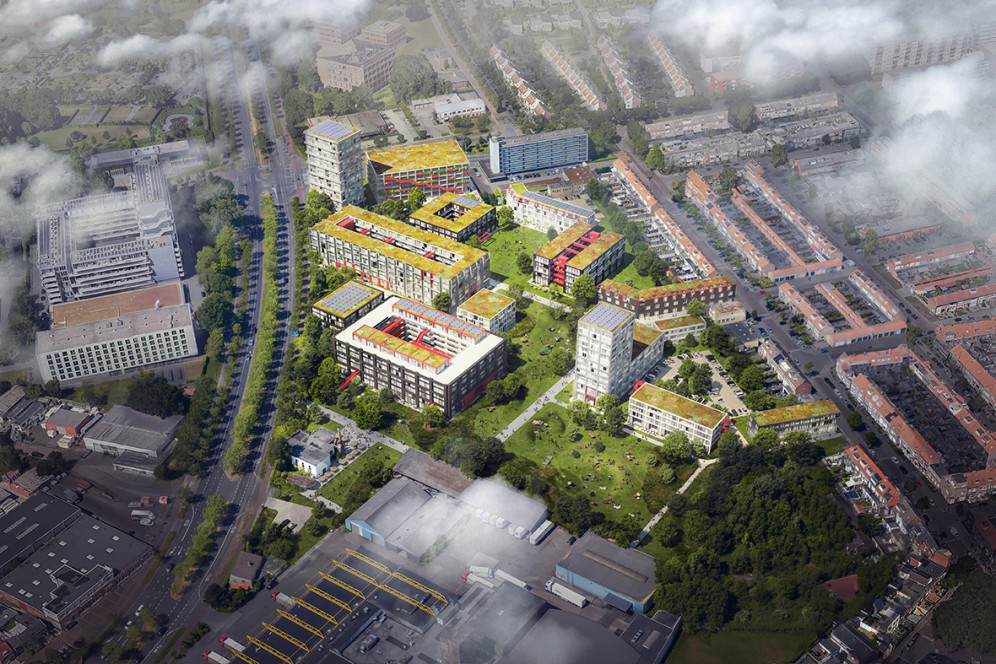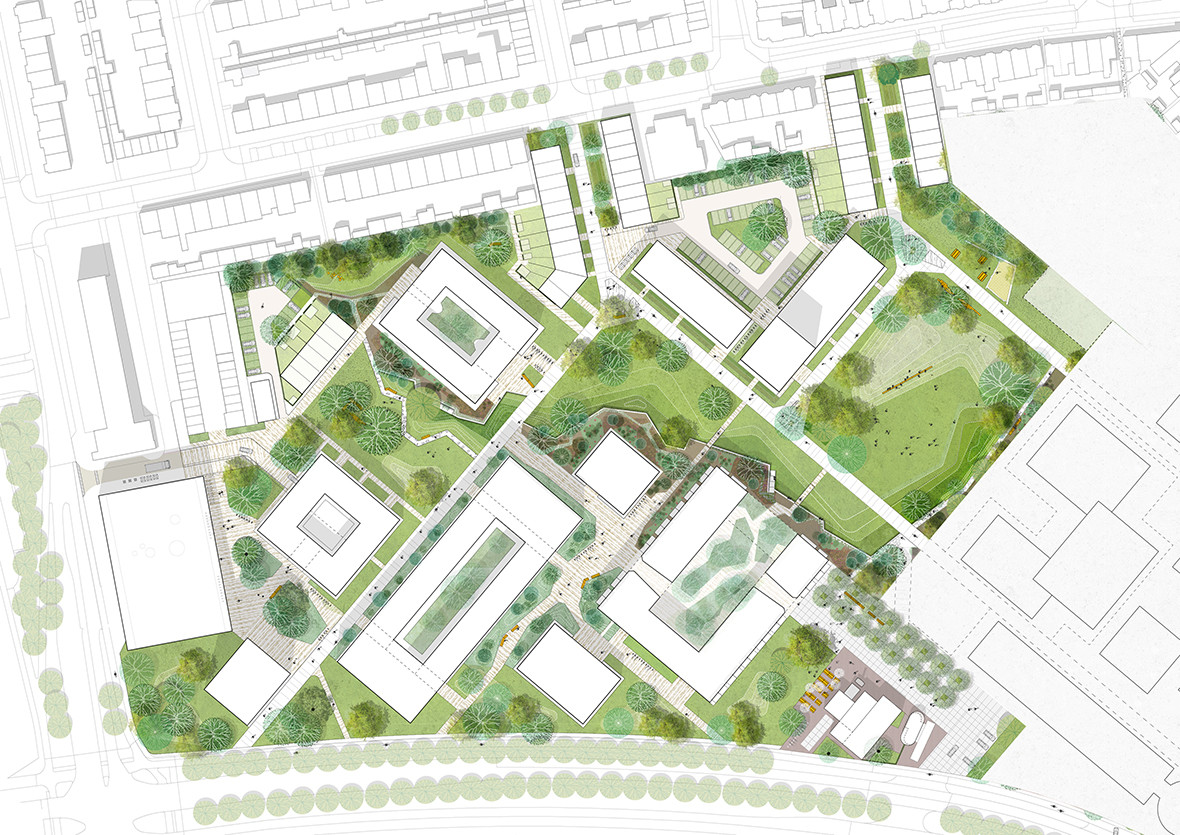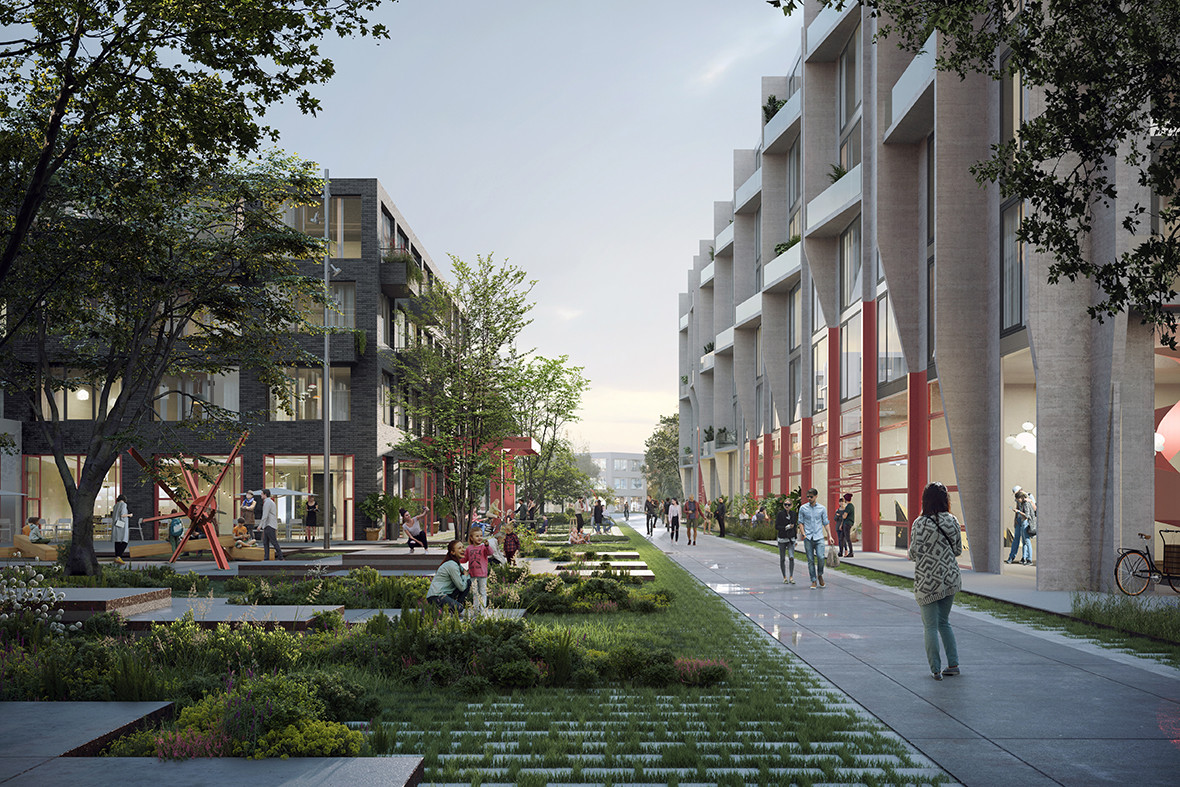


Blossem, a new district on the former Nibb-it industrial estate in Breda, has been wholly designed with collectivity, inclusivity (both social and natural), and urban vegetation in mind. The park is open to both local residents and those living in adjacent neighbourhoods, and cyclists and pedestrians are given right of way over cars. The design is inspired by themes such as climate adaptation, sustainability, health, biodiversity, water storage, and nature inclusiveness.
The essence of the plan area is linked to the location’s multilayered history, and efforts have been made to preserve industrial heritage. For instance, the spatial characteristics of the former factory site, as well as the characteristic angular twist of the existing building, have been incorporated into the urban development plan. Solitary building blocks, positioned at the same angle on the existing urban fabric, are also designed in a way that echoes the industrial past. The building types alternate, with a focus of smaller buildings on the north side of the plan area and the largest buildings on Ettensebaan road. All dwellings face the park and have private outdoor spaces that border it, functioning as an extension of the living space. The transitions between the park and residential areas reinforce both functions.
Blossem has a powerful identity: it is as sleek and industrial as it is green. Robust buildings aim to revive the soul of the former factory site, which is now surrounded by a 2.7-hectare, car-free urban park. The buildings’ scattered positioning throughout the park, rather than encircling it, creates a high-quality and future-oriented residential environment that gives all residents access to a lush, green area as soon as they open their front door.
Parking facilities, located directly at the entrance to Blossem, are mostly underground or in a multistorey car park. The lines of the main structure trace an inverted Y shape in the plan area, connecting Tuinzigt and the shopping centre to the southwest corner of the area with a crossing and public transport hub on Ettensebaan road, and the former boiler house on the other side of the plan area.

The park forms a seamless, green, urban structure that connects with its surroundings. It is a green oasis that binds the buildings together and visibly extends right to the edges of the plan. The area’s alternation between buildings and greenery creates a unique spatial character unlike any of the nearby residential areas. This design creates large, open spaces that could be used for neighbourhood events, as collective spaces, or simply as small, green pockets between buildings. The rough zone – the central element – delineates the boundary of the wadi, which meanders along the length of the planning area. The wadi and rough zone therefore ensure spatial continuity throughout the planning area. The wadi collects rainwater and offers a versatile habitat and varied microclimate for flora and fauna. The rough zone features steep edges and various elevations created using the demolition material from the old factory. The vegetation includes flowering native shrubs, perennials, and herbs that contrast with the opposite side of the wadi, which is planted with grasses. This contrast is reinforced by the proposed mowing plan: extensive in the rough zone and intensive in the lawns.

| Location. | Breda, The Netherlands |
|---|---|
| Assignment | Urban plan, development vision and design public space |
| Size | 5,2 ha |
| Design | 2019 - now |
| Construction | 2022 - now |
| Status | Final design |
| Client | Developer combination NBU / Maas Jacobs |
| In collaboration with | Studioninedots, Municipality of Breda, Attis |